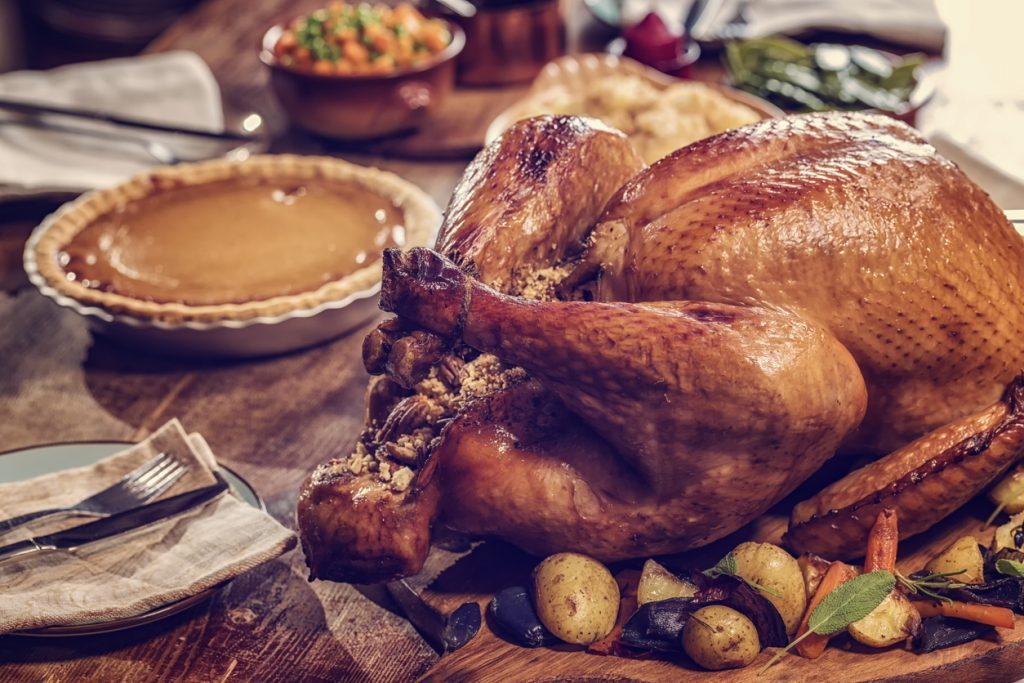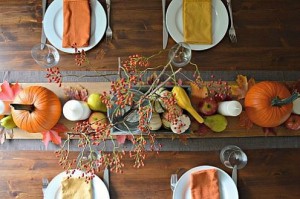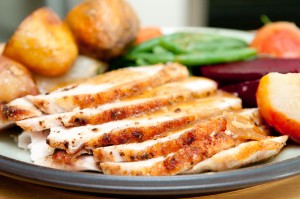How to Cook the Perfect Turkey

I can vividly recall being little and the scent of my grandmother’s turkey wafting up the stairs into my bedroom before the day had even really started. It never occurred to me then that it was rather odd to smell the turkey so early in the morning, especially when we weren’t eating until much later in the day.
If you’ve done the calculations you can figure out that our bird likely cooked for 8 or more hours. Long enough to ensure that it was well cooked (read: dry, dry, dry), crisp (read: dry) and in need of copious amounts of gravy in order to make it edible. Essentially, it was way overcooked. Frankly, a grocery store rotisserie chicken would have been better.
I’m sure our family wasn’t the only one to panic slightly when it came to cooking a prize poultry, and it was only when I really learned to cook that I discovered that roasting the perfect turkey takes far less time than I had originally thought. In fact, with a few tricks tucked into your back pocket, it’s hardly more difficult than roasting a chicken.
My turkeys are left un-stuffed, un-trussed, and un-brined, however they are basted. I keep the preparation simple, the cooking time short, and the resting time lengthy in order to cook the sides in my too-small oven. Basically, the bird is unfussy, moist, and flavourful, and most importantly, it’s ridiculously easy to make.
I’m sharing the tricks I’ve learned over the years that will hopefully make your turkey dinner a breeze to pull together.
How to Cook the Perfect Turkey
The Basics:
Estimate 1 pound per person (or 1½ if you’d like leftovers) when determining what size of turkey you need.
- 10-12 people = 12-15 lb turkey
- 14-16 people = 15-18 lb turkey
- 18-20 people = 18-23 lb turkey
Frozen turkeys require 5 hours per pound of defrosting time in the fridge (approx. 1 full day for every 5 pounds). Be sure to place your turkey on a tray to capture any juices that may release during the defrosting process. You can also defrost your turkey in a sink full of cold water, if you prefer. This will take ¾ of the time of the fridge method.
Be sure to let the (thawed) turkey sit at room temperature for one hour before cooking. This will help to loosen up the muscles and allow the meat to cook more evenly.
Similarly, let the turkey rest for 35-45 minutes (or more) before carving. This will allow the meat to re-absorb the juices and remain moist. Tent the turkey with foil and leave it undisturbed while you work on the gravy and side dishes.
Remove neck and giblets from turkey and reserve for stock for gravy, if desired.
Cooking Temperatures & Times for the Perfect Turkey
- Cook an unstuffed turkey for 13-15 minutes per pound.
- 8 lb turkey = approx. 2 hours
- 12 lb-15 lb turkey = approx. 3-4 hours
- 15 lb-18 lb turkey = approx. 4-4 ¾ hours
- 20 lb-25 lb turkey = approx. 5-6 hours
Cook turkey at 425ºF for the first 30 minutes of cooking time, then reduce temperature to 350ºF and cook for remainder of the time.
Double check for doneness by checking the turkey’s temperature. A thermometer stuck into the thickest part of the meat, near the thigh, should register 170ºF.
The Aromatics
- While I don’t stuff my turkey with bread, I do like to include aromatics, which help to infuse flavour into the pan drippings. Although my recipe suggests apples, onions and sage, you can also use lemon, carrots, celery, parsley and rosemary (sparingly).
Carving the Bird
- This slideshow provides an excellent tutorial on how to properly cut a turkey.
- If you have one, an electric knife is an excellent way to cut through turkey meat. Otherwise, a standard carving knife will work just fine.
Garnishing the Platter
If you carve your turkey tableside, here are some suggestions for garnishing your platter:
Decide on the look you are going for, whether fancy or casual, and choose your garnishes accordingly. Roasted vegetables, onions and herbs, might surround a casually decorated turkey, while a more formal turkey could be flanked with fresh fruits (pomegranates, apples, lemons), nuts, and herbs.














